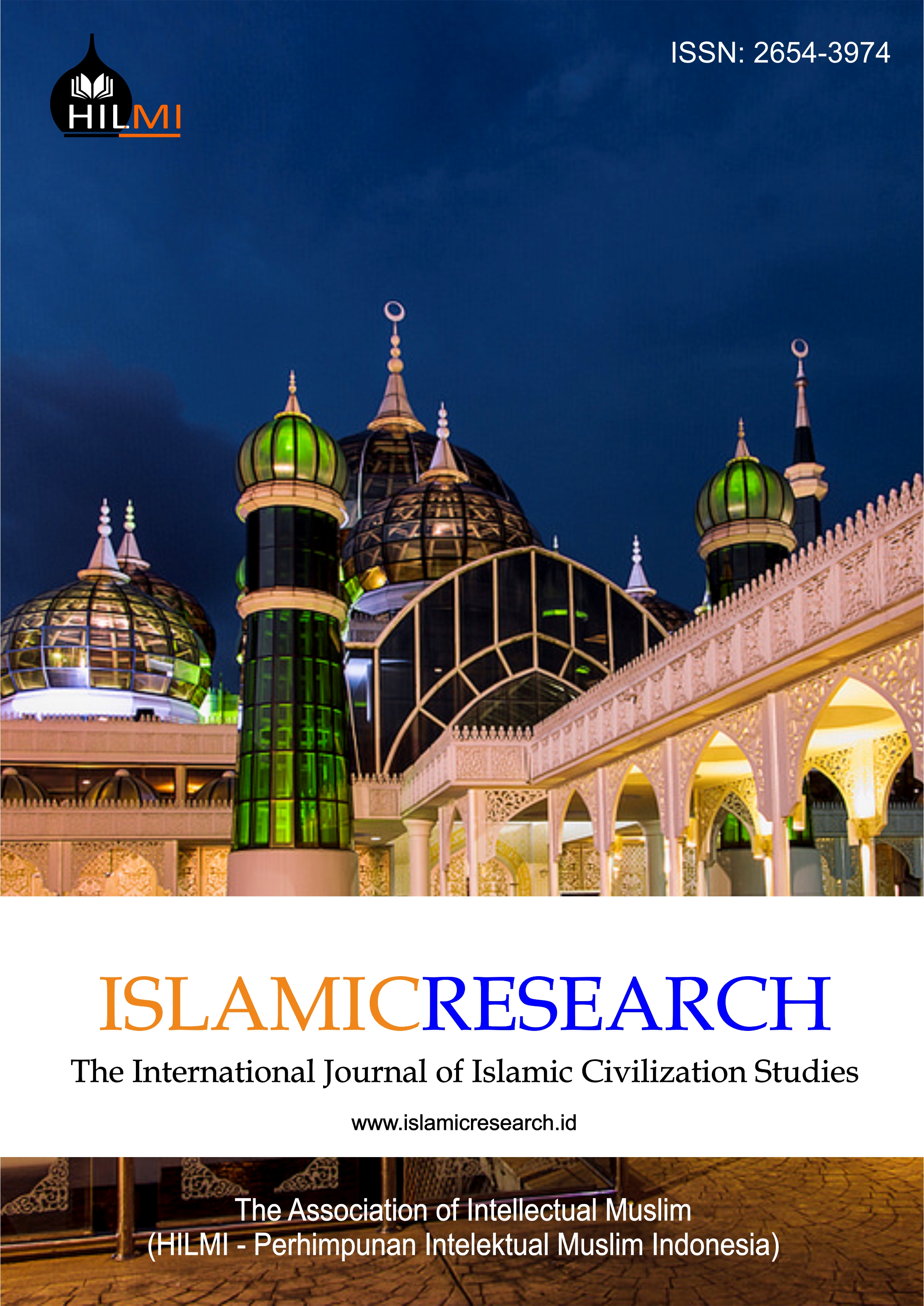Curriculum and Character Education:
Amidst the Challenges of 21st Century Globalization and Student Character Crisis
Abstract
This research is motivated by the phenomenon of the low character of students in responding to 21st-century globalization. Because of this, it is important to ask whether curriculum policies have prepared students to be adaptive to these dynamics. This article aims to analyze the character content and the gradations of student social development in the domain of attitudes in the applicable educational curriculum in Indonesia. This study used a qualitative content analysis method with a directed type design and a framework of eight character strengths that took the coding, theoretical approach, findings, and analysis stages of the Regulation of the Minister of Education and Culture Republic of Indonesia document number 20 of 2016 concerning Basic and Secondary Education Graduate Competency Standards (SKL). The research found: first, the character content is in the attitude domain; spiritual and social, aimed at shaping the character strength of students to become religious, honest, caring, lifelong learners, and physically and mentally healthy; second, the gradation of student social development still focuses on real social development, and has not included the gradation of virtual social development of students as an effort to respond to 21st-century globalization. Therefore, this study recommends the Indonesian government revitalize the character content of SKL in educational curriculum policies by considering two forms of gradation of both real and virtual social development of students as the next generation of the nation.
References
Affandy, H., Aminah, N. S., & Supriyanto, A. (2019). The correlation of character education with critical thinking skills as an important attribute to success in the 21st century. Journal of Physics: Conference Series, 1153, 012132. doi:10.1088/1742-6596/1153/1/012132
Anwar, H. (2009). Penilaian sikap llmiah dalam pembelajaran sains. Jurnal Pelangi Ilmu, 2(5), 103-114.
Aryanti, H. (2018). 90 Persen anak muda di Indonesia gunakan internet untuk media sosial. Merdeka.com. Retrieved from https://www.merdeka.com/peristiwa/90-persen-anak-muda-di-indonesia-gunakan-internet-untuk-media-sosial.html
Azuike, M. A. (2017). Challenges and negative effects of social media on the education of children and young adults in the 21st century. Journal of Arts and Contemporary Society ISSN, 2277, 0046.
Bachtiar, A. (2019). Pendidikan ruhani dalam Alquran. Intiqad: Jurnal Agama dan Pendidikan Islam, 11(1), 171-191.
Bahri, S. (2017). Pengembangan Kurikulum Dasar dan Tujuannya. Jurnal Ilmiah Islam Futura, 11(1), 15-34.
Betoncu, O., & Ozdamli, F. (2019). The disease of 21st century: Digital disease. TEM Journal, 8(2), 598.
Black, D. (2010). The behavior of law: Emerald Group Publishing.
Boyer, W., & Crippen, C. L. (2014). Learning and teaching in the 21st century: An education plan for the new millennium developed in British Columbia, Canada. Childhood Education, 90(5), 343-353.
BPS. (2018). Statistik Sosial Budaya 2018. Jakarta: Badan Pusat Statistik Indonesia
BPS. (2021). Sosial dan Kependudukan. Jakarta: Badan Pusat Statistik Indonesia Retrieved from https://www.bps.go.id/istilah/index.html?Istilah_sort=keyword_ind
Chairilsyah, D. (2016). Metode dan Teknik Mengajarkan Kejujuran Pada Anak Sejak Usia Dini. Jurnal Educhild: Pendidikan dan Sosial, 5(1), 8-14.
Ching Sing, C., Liang, J.-C., Tsai, C.-C., & Dong, Y. (2020). Surveying and modelling China high school students’ experience of and preferences for twenty-first-century learning and their academic and knowledge creation efficacy. Educational Studies, 46(6), 658-675.
Darmadi, H. (2019). Pengantar Pendidikan Era Globalisasi: Konsep Dasar, Teori, Strategi dan Implementasi dalam Pendidikan Globalisasi: An1mage.
Daryanto, K. (2017). Pembelajaran abad 21. Yogyakarta: Gava Media.
Davidson, M., Lickona, T., & Khmelkov, V. (2008). Smart & good schools: A new paradigm for high school character education. Handbook of moral and character education, 2008.
Depag, R. I. (2009). Alquran dan terjemahnya. Jakarta: Depag.
Dewi, E. (2019). Potret Pendidikan di Era Globalisasi Teknosentrisme dan Proses Dehumanisasi. Sukma: Jurnal Pendidikan, 3(1), 93-116.
Didiyanto. (2017). Paradigma Pengembangan Kurikulum PAI di Lembaga Pendidikan. EDURELIGIA: Jurnal Pendidikan Agama Islam, 1(2), 122-132.
Duarte, F. (2019). Berapa banyak waktu yang dihabiskan rakyat Indonesia di media sosial? BBC World Service. Retrieved from https://www.bbc.com/indonesia/majalah-49630216
Elo, S., & Kyngäs, H. (2008). The qualitative content analysis process. Journal of advanced nursing, 62(1), 107-115.
Eril. (2019). Data Jumlah Pengguna Internet di Indonesia Saat Ini. Qword.com. Retrieved from https://qwords.com/blog/jumlah-pengguna-internet-di-indonesia/
Fajar, I. (2018). KPAI: Media Sosial Bisa Picu Tawuran Pelajar. Suara.com. Retrieved from https://www.suara.com/news/2018/09/13/064500/kpai-media-sosial-bisa-picu-tawuran-pelajar
Firmansyah, M. I. (2017). Program pembudayaan terpadu dalam membina karakter Islami pada siswa sekolah dasar sebagai implementasi kurikulum “Bandung Masagi”. Jurnal Pendidikan Agama Islam -Ta’lim, 15, 91-97.
Hidayat, T., Syahidin, & Rizal, A. S. (2019). Prinsip Dasar Falsafah Akhlak Omar Mohammad Al-Toumy Al-Syaibany dan Implikasinya dalam Pendidikan di Indonesia. Jurnal Kajian Peradaban Islam, 2(1), 10-17.
Hsieh, H.-F., & Shannon, S. E. (2005). Three Approaches to Qualitative Content Analysis. Qualitative Health Research, 15(9), 1277-1288. doi:10.1177/1049732305276687
Huda, N. (2017). Manajemen Pengembangan Kurikulum. Al-Tanzim: Jurnal Manajemen Pendidikan Islam, 1(2), 52-75.
Hyangsewu, P. (2019). Tantangan dan Antisipasi Pendidikan Agama Islam di Tengah Arus Globalisasi. Jurnal Kajian Peradaban Islam, 2(2), 1-5.
Ibrahim, R. (2012). Kurikulum dan pembelajaran. Jakarta: Rajagrafindo Persada.
Intan, G. (2018). KPAI: Kasus Kekerasan Anak dalam Pendidikan Meningkat Tahun 2018. voaindonesia.com. Retrieved from https://www.voaindonesia.com/a/kpai-kasus-kekerasan-anak-dalam-pendidikan-meningkat-tahun-2018/4718166.html
Kemdikbud. (2016). Permendikbud No. 20 Tahun 2016 tentang Standar Kompetensi Lulusan Pendidikan Dasar dan Menengah. Jakarta: Kemdikbud
Khoiri, A., & Haryanto, S. (2018). The 21st century science skills profile based local wisdom education (tourist attractions and typical foods in regency of wonosobo). Jurnal Penelitian dan Pengabdian Kepada Masyarakat UNSIQ, 5(3), 361-371.
Kinzie, J. (2017). Improving Quality in American Higher Education: Learning Outcomes and Assessments for the 21st Century by Jillian Kinzie. Journal of College Student Development, 58(8), 1281-1283.
Komara, E. (2018). Penguatan pendidikan karakter dan pembelajaran abad 21. Sipatahoenan, 4(1), 17-26.
Lickona, T. (2009). Educating for character: How our schools can teach respect and responsibility: Bantam.
Martínez-Ariño, J., & Teinturier, S. (2019). Faith-Based Schools in Contexts of Religious Diversity: An Introduction. Religion & Education, 46(2), 147-158.
McAlister, A., & Horan, E. (2017, 2017). Acceleration of E-learning in Australia and Impacts of E-waste: Approaches to reforming e-learning in the 21st century.
Moser, S. C. (2016). Reflections on climate change communication research and practice in the second decade of the 21st century: what more is there to say? WIREs Climate Change, 7(3), 345-369. doi:https://doi.org/10.1002/wcc.403
Mugot, D. C., & Sumbalan, E. B. (2019). The 21 st Century Learning Skills and Teaching Practices of Pre-Service Teachers: Implication to the New Philippine Teacher Education Curriculum. International Journal of Multidisciplinary Research and Publications (IJMRAP), 2(1), 22-28.
Mulyaningsih, H. D., & Ramadani, V. (2017). Social entrepreneurship in an Islamic context. In Entrepreneurship and Management in an Islamic Context (pp. 143-158): Springer.
Mulyasa, E. (2014). Guru dalam implementasi kurikulum 2013. Bandung: PT Remaja Rosdakarya Offset.
Niemi, K. (2018). Drawing a line between the religious and the secular: the cases of religious education in Sweden and India. Journal of Beliefs & Values, 39(2), 182-194.
Paat, Y.-F., & Markham, C. (2020). Digital crime, trauma, and abuse: Internet safety and cyber risks for adolescents and emerging adults in the 21st century. Social Work in Mental Health, 1-23. doi:10.1080/15332985.2020.1845281
Popkova, E. G., & Gulzat, K. (2019, 2019). Technological Revolution in the 21 st Century: Digital Society vs. Artificial Intelligence.
Purwati, Y. (2020). Mens sana in corpore sano. from PPPPTK Bahasa Kemdikbud RI http://p4tkbahasa.kemdikbud.go.id/2020/02/07/mens-sana-in-corpore-sano/
Ramadlani, A. K., & Wibisono, M. (2017, 2017). Visual literacy and character education for alpha generation.
Rockenbach, A. N. (2020). Character Education for the Public Good: The Evolution of Character Capacities in and Beyond College. Journal of College and Character, 21(1), 6-13.
Rokim. (2018). Konsep Pendidikan Jasmani dalam Perspektif HAMKA. Jurnal Studi Islam: Pancawahana, 13(1), 72-83.
Shahid, A., & Sumbul, M. (2017). Social Evils in Media: Challenges And Solutions In 21st Century. People: International Journal Of Social Sciences, 3(3), 854-875.
Shihab, Q. (2001). Pendidikan Agama, Etika dan Moral. Mimbar Pendidikan, 1, 19-23.
Shizha, E., & Makuvaza, N. (2017). Re-thinking Postcolonial Education in Sub-Saharan Africa in the 21st Century: Post-Millennium Development Goals: Springer.
Siddiq, F., Gochyyev, P., & Wilson, M. (2017). Learning in Digital Networks–ICT literacy: A novel assessment of students' 21st century skills. Computers & Education, 109, 11-37.
Soediro, S. (2017). Hubungan Hukum dan Globalisasi: Upaya Mengantisipasi Dampak Negatifnya. Kosmik Hukum, 17(1).
Soni, N., & Mathur, M. (2020). Social Media-21st Century Latest Addiction. Tathapi with ISSN 2320-0693 is an UGC CARE Journal, 19(22), 196-200.
Steiner, D. (2017). Curriculum research: What we know and where we need to go. Standards Work, 1-13.
Suciatiningrum, D. (2019). KPAI: Angka kekerasan anak di media sosial terus naik. IDN Times. Retrieved from https://www.idntimes.com/news/indonesia/dini-suciatiningrum/kpai-angka-kekerasan-anak-di-media-sosial-terus-naik/5
Suharyat, Y. (2009). Hubungan antara sikap, minat dan perilaku manusia. Jurnal Region, 1(3), 1-19.
Suud, F. (2017). Kejujuran dalam perspektif psikologi Islam: Kajian konsep dan empiris. Jurnal Psikologi Islam, 4(2), 121-134.
Tafsir, A. (2008). Filsafat Pendidikan Islami. Bandung: Indonesia: Remaja Rosdakarya.
Taufik, M. (2019). Kaisar Hirohito : Berapa jumlah guru yang tersisa. itjen.kemdikbud.go.id. Retrieved from https://itjen.kemdikbud.go.id/public/post/detail/kaisar-hirohito-berapa-jumlah-guru-yang-tersisa
Taylor, R. L. (1998). The religious character of the Confucian tradition. Philosophy East and West, 80-107.
Thomas, G. M. (2007). The cultural and religious character of world society. In Religion, globalization, and culture (pp. 35-56): Brill.
Tu’u, T. (2004). Peran Disiplin Pada Perilaku dan Prestasi Siswa, Jakarta: PT. Gramedia Widia Sarana Indonesia.
Ubani, M., & Keränen-Pantsu, R. (2018). Evolving cultures of religious education: new perspectives on research, policies and practices. In: Taylor & Francis.
Ulfah, M. (2015). Maria Ulfah: Kekerasan Pada Anak Dimulai dari Internet. kominfo.go.id. Retrieved from https://kominfo.go.id/index.php/content/detail/4865/Maria+Ulfah%3A+Kekerasan+Pada+Anak+Dimulai+dari+Internet/0/sorotan_media
von Brömssen, K., Ivkovits, H., & Nixon, G. (2020). Religious literacy in the curriculum in compulsory education in Austria, Scotland and Sweden-a three-country policy comparison. Journal of Beliefs & Values, 41(2), 132-149.
White, J. (2004). Should religious education be a compulsory school subject? British Journal of Religious Education, 26(2), 151-164. doi:10.1080/01416200420042000181929
Zuchdi, D. (2009). Pendidikan karakter: Grand design dan nilai-nilai target. Yogyakarta: UNY Press. Moral Doing/Learning to Do.


This work is licensed under a Creative Commons Attribution-ShareAlike 4.0 International License.
Copyright
- The Author and each co-authors transfer the copyright and grant the journal right of publication with the work simultaneously licensed under an International Creative Commons Attribution and ShareAlike 4.0 License that allows others to share the work with an acknowledgement of the work's authorship and initial publication in this journal.
- Authors are able to enter into separate, additional contractual arrangements for the non-exclusive distribution of the journal's published version of the work (e.g., post it to an institutional repository or publish it in a book), with an acknowledgement of its initial publication in this journal.
- Authors should sign copyright transfer agreement when they have approved the final proofs sent by ISLAMIC RESEARCH prior the publication.
Author Guarantee
- The Author (Co-authors) guarantees that the Materials are an original work, submitted only to ISLAMIC RESEARCH, and have not been published previously.
- In case the Materials were written jointly with Co-authors, the Author guarantees that he/she has informed them of the terms of this Agreement and obtained their signatures or written permission to singe on their behalf.
- The Author guarantees as well that:
- The Materials do not contain libelous statements.
- The Materials do not infringe on other persons' rights (including without limitation copyrights, patent rights and the trademark right).
- The Materials do not contain facts or instructions that can cause damage or injury to third parties and their publication dose not cause the disclosure of any secret or confidential information
ISLAMIC RESEARCH is Published by Perhimpunan Intelektual Muslim Indonesia, and licensed under a Creative Commons Attribution-ShareAlike 4.0 International License.
Copyright ©2022.







